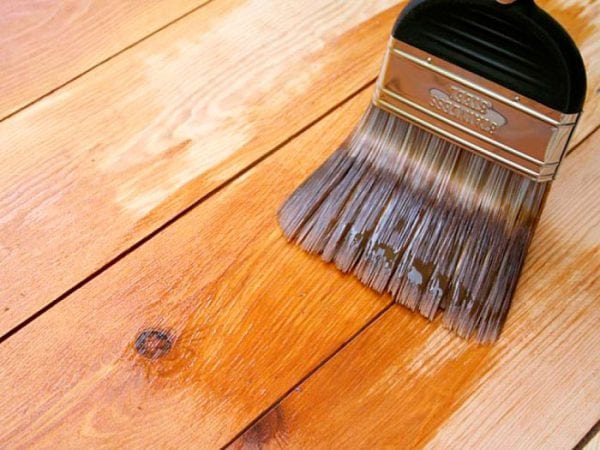The modern market for paints and varnishes is very diverse. Therefore, making a choice is not so simple, not knowing the technical features of certain types of varnish. The task is even more complicated when applying several layers of varnish of different varieties.
- The characteristic features of alkyd varnishes
- The main characteristics of acrylic varnishes
- Conclusion
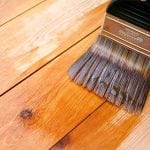
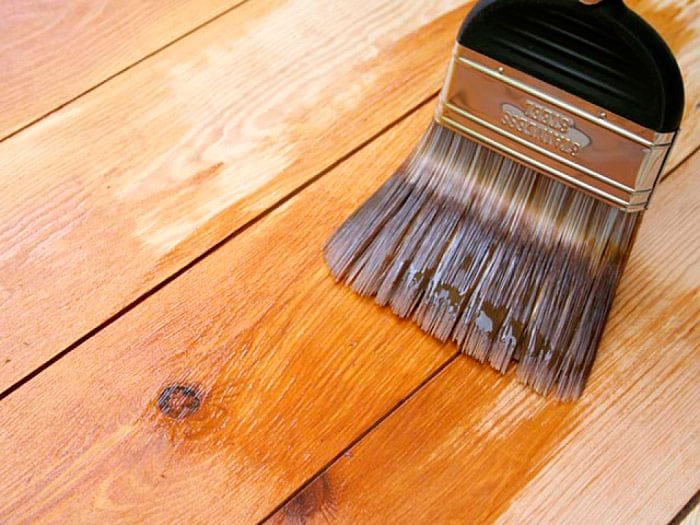
For example, one of the most frequently asked questions: is it possible to apply an acrylic composition to alkyd varnish or vice versa? To answer this or similar questions, you should understand the properties of these paints and varnishes in a little more detail.
to contents ↑The characteristic features of alkyd varnishes
Alkides are made on the basis of synthetic solvents and alkyd resins. Consumption per layer - from 70 to 75 gr. per square meter. They are used primarily for varnishing furniture or coatings subject to increased wear.
The main advantages and disadvantages of alkyds will be listed below. This is one of the most common paint and varnish material groups on the market. There are a number of reasons for this.
Alkyd Benefits:
- Competitive cost. This is perhaps the main factor ensuring the popularity of this group of materials. The use of such varnishes is considered economical when processing large areas, which leads to the frequent use of alkyds in construction.
- Working with alkyds is not difficult, and the set of tools is limited to a roller or brush.
- Extremely resistant to moisture and durable.
- The composition is almost colorless.
- The compositions are considered universal. You can apply such varnishes not only indoors, but also on the street (although this happens much less often).
- Aesthetic appearance of varnish film.
- Excellent light and heat resistance.
- Elasticity.
- Good adhesive performance.
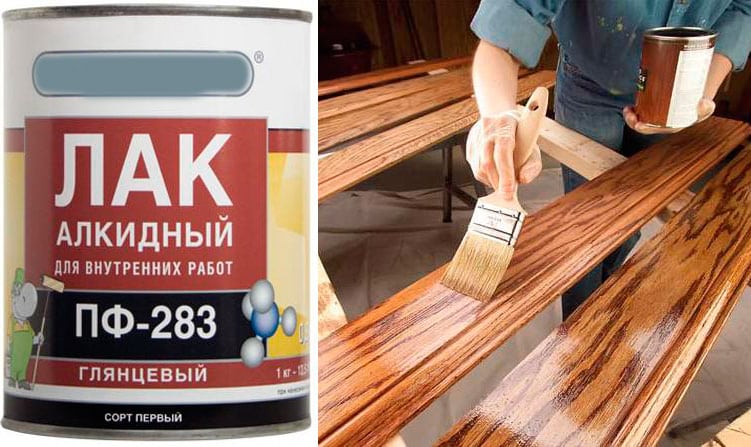
Disadvantages of alkyds:
- Dry for a long time, although faster than, for example, oil. The average drying time is 3 days. To speed up the drying process, manufacturers of products add special hardeners to the composition, reducing the time of the above process to a day. There are also alkyd-urethane varnishes, which are characterized by even more rapid drying - from 6 to 12 hours. But the main thing is that alkyd-urethane products are characterized by very high wear resistance.
- Toxicity.
- When processing the surface, as well as during drying, the varnish layer must be protected from moisture.
- To obtain an acceptable quality, 2-3 layers are necessary.
Note! To apply alkyd varnish on acrylic varnish or paint is undesirable. However, in the absence of other options, the surface must be cleaned with fine emery. This will increase the adhesion parameters and avoid peeling of the coating.
The incompatibility of alkyd and acrylic is due to the different composition of the materials. Alkides are based on polyhydric alcohols and are produced by polycondensation with orthophthalic acid. There are two types of alkyd compounds: pentaphthalic and glyphthalic.
to contents ↑The main characteristics of acrylic varnishes
These formulations are water based. First of all, they are used in interior decoration - precisely because they are based on water. Main areas of use: furniture, building structures, plastics, steel coils. Often used in the processing of bedrooms or children's rooms. The composition is applied by spray, roller or brush.
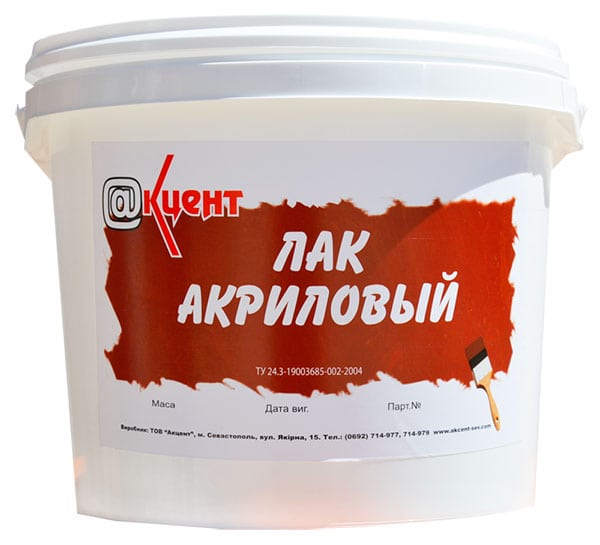
Acrylic Benefits:
- They are considered the most environmental type of paint products, as they do not include organic solvents.
- Fireproof.
- No toxicity and unpleasant odor.
- High strength.
- Elasticity.
- Transparency, the lack of yellowness in the shade, the ability not to violate the natural texture and color of the tree (i.e. do not make the wood darker).
- Gloss can vary from glossy to semi-gloss or semi-gloss.
Disadvantages of acrylic:
- Although acrylic dries faster than alkide (during the day), which is convenient when drying several layers, it takes 10 to 14 days to fully form the film.
- It is believed that such varnishes are undesirable to use in rooms that are characterized by too intense attendance.
Also, as in the case of applying alkyd to acrylic, avoid applying acrylic varnish to alkyd. The fact is that the consequences of such work are difficult to predict. For example, the surface may be rough or swollen. However, if there is no other option, priming is required. In this case, the top layer will lie much better.
to contents ↑Conclusion
Thus, a combination of both types of varnish - alkyd and acrylic - is not recommended. If there is a choice between the described compounds, then you should focus on specific needs. You can build on the advantages and disadvantages of varnishes, which are listed above. Alkides are cheaper, but in general, acrylic compositions have the best set of consumer characteristics.



